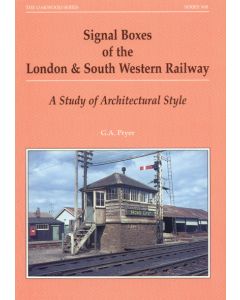Apply Discount Code
Signal Boxes of the LSWR
£11.95
Available
We currently have 0 in stock.
If this item is out of stock it will take around 1 week(s) for us to obtain a copy if you order today. Thanks
Stock Code
OA565.0
OA565
In the signal box we have what was perhaps the first 'true' railway building. A station might look like a country vicarage and its adjacent goods shed like a tithe barn, but seldom, and never on the London & South Western Railway, was there any attempt to blend the signal box into the general style of the other structures. There are several reasons for this. By the time signal boxes became widespread the public were familiar with railways and there was no need for confidence-boosting. Furthermore, they were private buildings, so ostentation was considered pointless. They also had to embrace many practical considerations such as affording the signalman a good view of the tracks and signals under his control, and providing room beneath him to house the mechanical interlocking. There had never before been the need for such a building, except possibly the relay stations erected in the previous century in connection with the Admiralty semaphore telegraph.
| Stock Code | OA565.0 |
|---|---|
| Author | Pryer GA |
| ISBN13 | 9780853615651 |
| Format | Softback |
| Height(mm) | 210 |
| Width(mm) | 148 |
| Page Count | 176 |
| Pictures | 150 |
| Publication Date | 1 Jan 2000 |
| Publisher | OAKWOOD PRESS |
| Publication Status | Available |
| Record last updated | 14/09/2023 |

